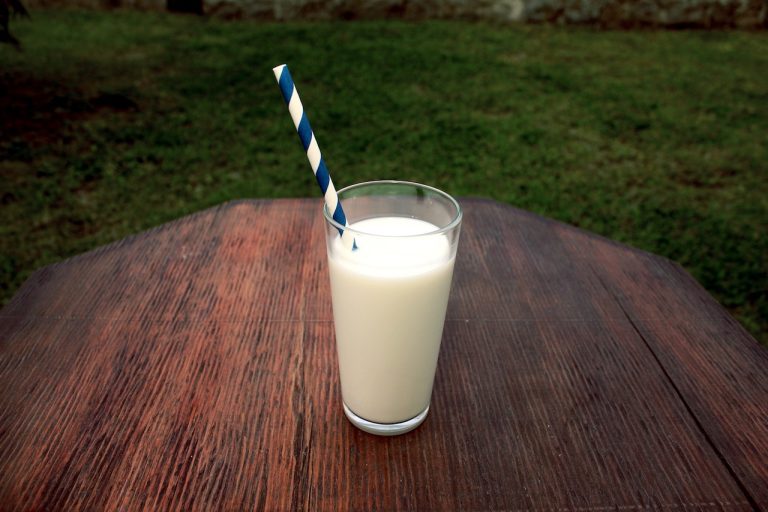In case you missed it, the Food and Drug Administration (FDA) ruled late last week that soy, oat, almond, and even hemp milk substitutes are allowed to continue using the word ‘milk’ in the names of their products. This comes after a decades-long dispute with the dairy industry that claimed using the word milk ‘confused’ consumers. After seeking public comment and conducting multiple studies and focus groups, the FDA acknowledged that consumers do not believe almond milk comes from cows and are not accidentally buying these products. Rather, the word ‘milk’ is merely a part of the everyday vocabulary among consumers.
The FDA did make one concession to the dairy industry and is recommending voluntary nutritional labeling that makes it clear that plant-based milk alternatives have different nutritional value than dairy milk. This draft guidance is currently accepting public comments on Regulations.gov through April 23, with a final decision to follow.
Although this may seem like a niche topic, there is a lot of story inspiration that can be taken from this one decision and applied to your beat. Here are a few:
Government subsidies
The United States government has been subsidizing the dairy industry since 1937, with many changes and alterations throughout the years. First came Federal Milk Marketing Orders which set a minimum price for milk processors to pay dairy farmers. This price fluctuates monthly and by geographical region.
Additional programs include those for food purchases, dairy donation, revenue protection, margin coverage and a collaborative fund for general promotion and research for the industry as a whole.
Something worth looking into are pandemic subsidies. The USDA created an assistance program during the pandemic to provide more than $350 million to dairy farmers for lost revenue between July and December 2020. It was recently announced that additional payments will be made to eligible farmers for another level of production that was not included in the initial round. This program was part of a $2 billion targeted assistance for the dairy industry that also pumped more money into several of the current subsidy programs.
What kinds of government subsidy programs does your beat include? How have they changed over time and how are they connected to price changes?
CPI basket and inflation
Milk is one of the products that is included in the Consumer Price Index, which regularly monitors a range of products for inflation to calculate the overall change in consumer prices.
The price of a gallon of whole and fortified milk has risen from $3.79 in January 2022 to $4.20 in January 2023 – a 10.8% increase. In the same time frame, a pound of 100% ground chuck beef has fallen 2.7%.
You can use the US Inflation Calculator tool to calculate the price trends accounting for inflation. With that in mind, you can see that milk prices had been steadily dropping since 1995 up until 2018 when they began to rise.
Using this index, look at the products on your beat and see if changes co-occur with government programs, big events, or new regulations. It may also be worthwhile to look at how the inflation rate in your industry compares to those that are in adjacent industries, like milk and beef sales.
Look closer at the arguments of legislative proposals
A couple of dairy state senators – Jim Risch (R-Idaho) and Tammy Baldwin (D-Wisc.) – are planning to reintroduce the DAIRY PRIDE Act which has been proposed three times already, in 2017, 2019, and 2021. Nothing happened with any of those three bills, and although it isn’t likely anything will happen this time either, it is worth taking a closer look at the arguments it is making.
The proponents of the bill affirm that plant-based milk products are nutritionally inferior to dairy milk and risk the health of the American public. Although plant-based milk is indeed fortified with nutrients, it would be disingenuous to not acknowledge that dairy milk is also fortified with vitamins and minerals that are not naturally occurring, particularly vitamins D and A. In reality, even the nutrients that are abundant in dairy milk, like calcium, are found in other foods and consumers are capable of getting a balanced diet in a variety of ways.
It seems the real concern is for the health of the dairy industry. The senators claim that labeling plant-based products as ‘milk’ is hurting dairy farmers, but these products are not the only reason milk sales have decreased in the past few decades. Americans have consistently been drinking less milk, on average, since the 1970s for a variety of reasons. This includes drinking a multitude of alternative beverages from soda to bottled water, eating less cereal for breakfast, and a shift away from whole milk to skim or 2% varieties.
Take some time to look into the arguments of proposals on your beat and take each one with a grain of salt. Are the arguments backed up with sound evidence or are the advocates “milking” minor issues for all they can?







